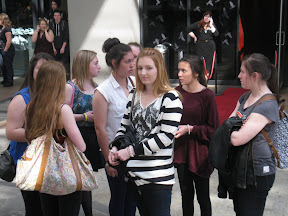
21st century learning is evolving as an ecosystem of learning driven by the advent of global, internet connections.
English is fast becoming the personal and public webmaster of 21st century learning.
English could be "the stargate" to higher order thinking.
And so the whole "texture" of English as a teaching subject is changing.
The boundaries are moving, even dissolving.
English may/could/can integrate and connect subjects AND shape that inter-curricular ideal we crave in the 21st century.
If we spend our whole lives in the silo of a single discipline, we cannot develop the imaginative skills to connect the dots or to anticipate where the next invention, and probable source of economic value, will come from.
- OECD The Case for 21st Century Learning - Andreas Schleicher
Profile of English Years 7-12
Overview
*developing personal micro skills (appreciating and practising quality techniques) as a reader, writer, listener, speaker and viewer
NOTE: Those who bewail students' declining grammar skills can be accommodated here.
Demoted rote learning practices can metamorphose into more dignified "recognition" learning.
I find that comparing writing styles (poor and quality esp in media articles) cultivates the students' understanding of what works well and what doesn't.
Hopefully they would like to mirror the quality version.
*developing personal macro skills (appreciating and practising associations and connotations) as a reader, writer, listener, speaker and viewer
Details
*developing imaginative, expository, communicative and evaluative capabilities and skills
*developing the ability to use language to shape and represent both personal growth and a world understanding
*developing the ability to apply language to cross-curricular learnings and to shape inter-curricular understandings
* developing problem-solving and predicting skills
*developing a knowledge of cultural heritage and a vision for cultural future
- My ideas developed from English Teachers Association NSW (ETA) On Learning in English
English in the Senior Years
In Australia, senior high school years identify Literature as a "sub-heading" of the subject English.
While English broadly embraces the study of:
*media - including newspapers and online texts + includes practising the skills of annotation
*modern novels + drama + poetry - character and theme studies
*non-fiction texts
*creative responses to prompts
To continue quoting Andreas Schleicher of the OECD Education Directorate:
The knowledge world is no longer divided between specialists and generalists. A new group-let's call them “versatilists”-has emerged. They apply depth of skill to a progressively widening scope of situations and experiences, gaining new competencies, building relationships and assuming new roles.
+
NOTE - 26.4.13
GOOGLE DOCS VOICE COMMENTS
Is English leading the way to meet this "inter-connecting", "shapeshifting" challenge of the 21st century?

To teach is to keep learning






























